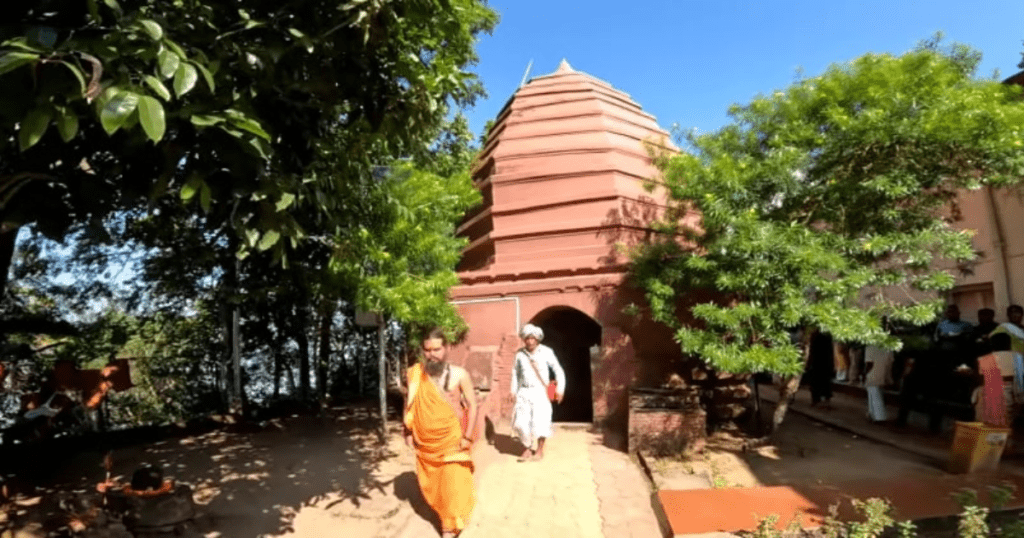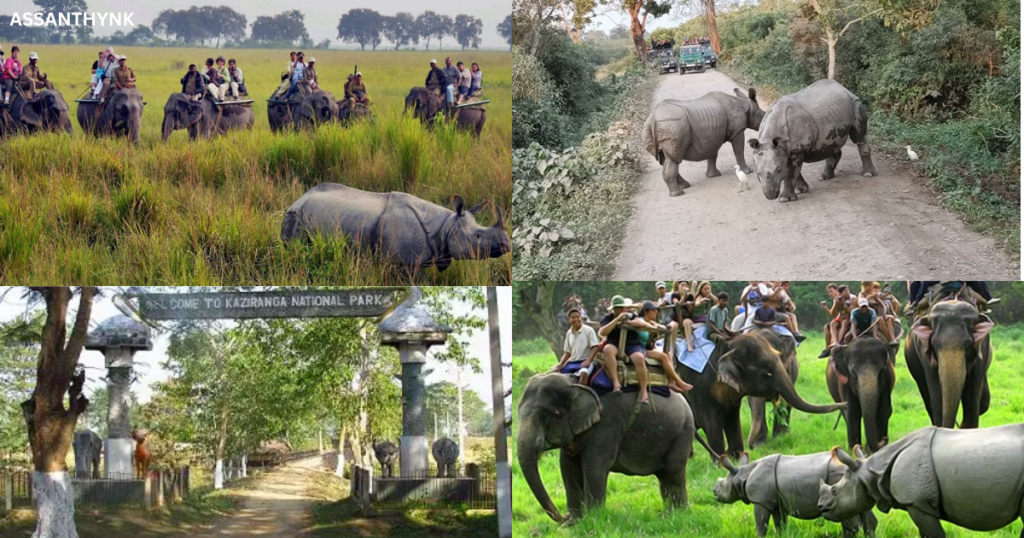Introduction
The Umananda Temple, nestled on the serene Peacock Island in the middle of the Brahmaputra River, is a treasure trove of spirituality, history, and natural beauty. As one of Assam’s most revered shrines, it draws pilgrims and tourists alike, offering a tranquil escape and a connection to India’s rich cultural heritage. Explores every facet of the Umananda Temple, highlighting why it is a must-visit destination for spiritual seekers and history enthusiasts.
Historical Significance of Umananda Temple
The Umananda Temple, located on the picturesque Peacock Island in the Brahmaputra River, is a historic gem of Assam. Built in the 17th century by Ahom King Gadadhar Singha, the temple reflects the rich cultural and architectural heritage of the region. Dedicated to Lord Shiva, it is a significant site for Shaivite worshippers.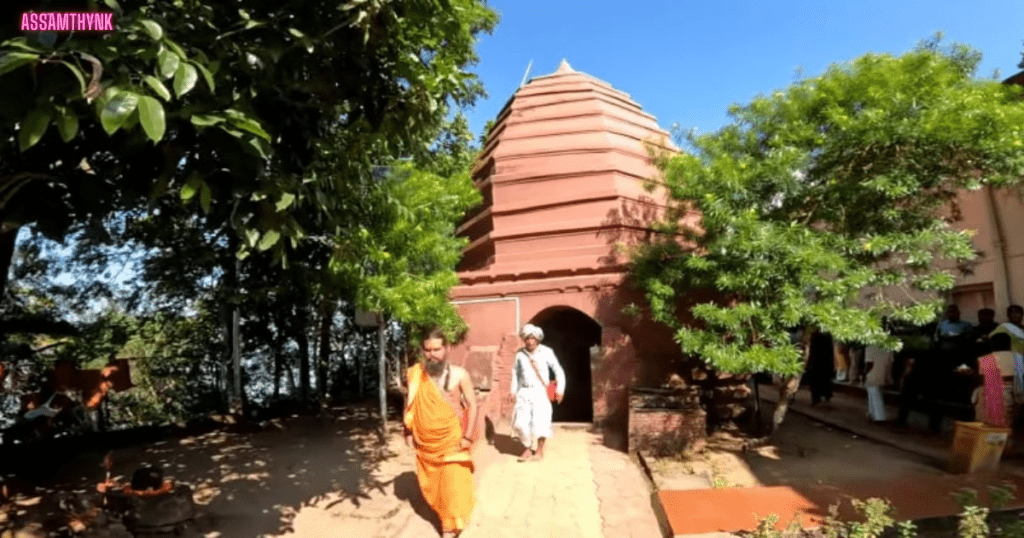
The temple has endured the test of time, surviving natural calamities like the devastating earthquake of 1897. It was later restored by devoted locals, preserving its sanctity and charm. Legends associated with the temple, including Lord Shiva’s meditation and the burning of Kamadeva, add to its mythological importance.
Umananda Temple stands as a testament to the spiritual devotion and artistic excellence of ancient Assam. Its location on the smallest inhabited river island further enhances its historical and cultural allure, making it a revered pilgrimage site and a popular tourist destination.
Architecture and Design
The Umananda Temple showcases a blend of traditional Assamese craftsmanship and Hindu temple architecture, reflecting the artistic brilliance of the 17th century. Built by Ahom King Gadadhar Singha, the temple is perched on the serene Peacock Island in the Brahmaputra River, adding to its visual splendor.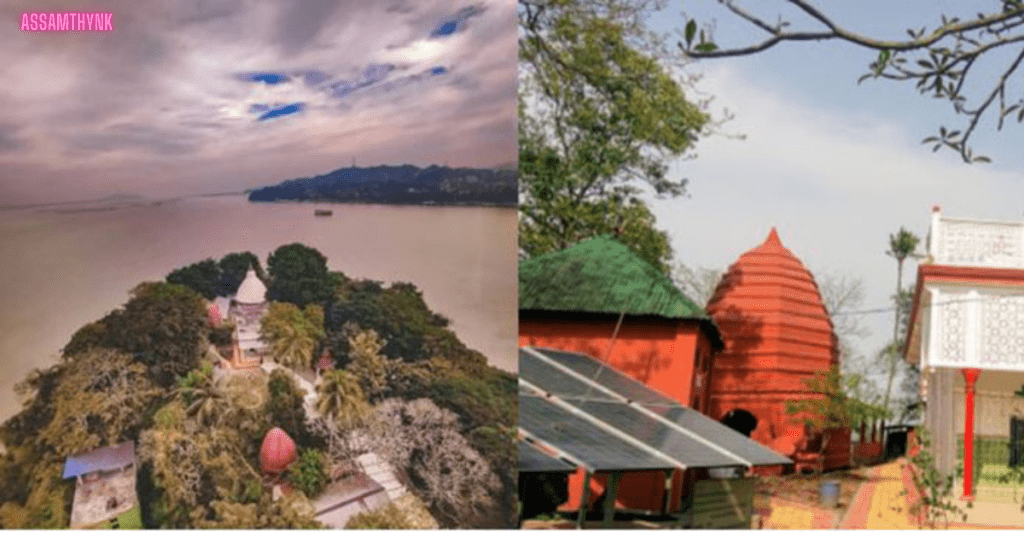
The temple\u2019s sanctum sanctorum, crowned by a dome-shaped structure, houses the sacred Shiva lingam, the focal point of devotion. The walls of the temple are adorned with intricate carvings depicting Hindu deities like Lord Shiva, Goddess Parvati, Lord Vishnu, and Lord Ganesha. These designs emphasize the cultural and religious richness of the era.
The surrounding landscape, combined with the temple\u2019s architecture, creates a serene and spiritually uplifting environment. The structure\u2019s simplicity, complemented by its artistic detailing, makes Umananda Temple not only a significant religious site but also an architectural marvel of Assam.
Religious Importance
The Umananda Temple, dedicated to Lord Shiva, holds immense religious significance for devotees, especially Shaivites. The temple’s name, derived from the combination of “Uma” (another name for Goddess Parvati) and “Ananda” (happiness), symbolizes the divine union and bliss of Shiva and Parvati. Worshippers believe that offering prayers here grants spiritual enlightenment, prosperity, and absolution of sins.
The temple’s sanctum houses a revered Shiva lingam, making it a sacred site for meditation and rituals. It is especially significant during Maha Shivaratri, a grand festival where thousands gather to honor Lord Shiva through prayers, hymns, and fasting.
The mythological association of the temple with Lord Shiva\u2019s meditation and the burning of Kamadeva adds further spiritual depth. Umananda Temple not only serves as a religious sanctuary but also as a beacon of faith, drawing pilgrims and visitors seeking peace and divine blessings.
Festivals Celebrated at Umananda Temple
Maha Shivaratri
Maha Shivaratri is the most significant festival celebrated at the Umananda Temple, drawing thousands of devotees from across Assam and beyond. Dedicated to Lord Shiva, this auspicious occasion marks the night of Shiva’s cosmic dance and his union with Parvati.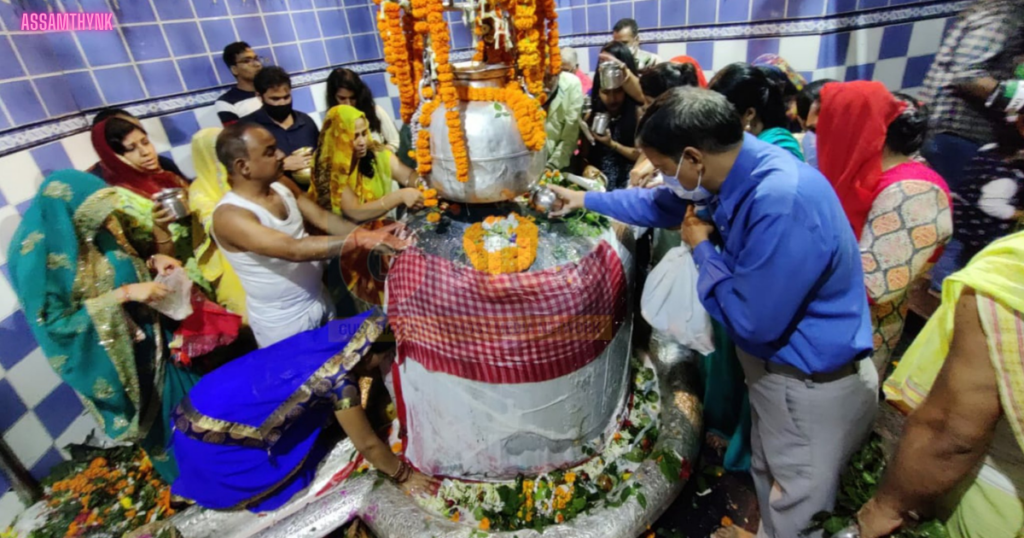
On this day, the temple becomes a hub of spiritual activity, with devotees fasting, meditating, and chanting hymns in praise of Lord Shiva. The rituals begin early in the morning with the ceremonial bathing of the Shiva lingam using milk, honey, and sacred water from the Brahmaputra River. Devotees light lamps and offer fruits, flowers, and bel leaves as part of their prayers.
The vibrant atmosphere, filled with the sounds of conch shells, bells, and devotional songs, creates a deeply spiritual experience. Visiting Umananda Temple during Maha Shivaratri offers a unique opportunity to witness devotion, cultural traditions, and the divine aura of this sacred celebration.
Other Celebrations
Apart from Maha Shivaratri, the Umananda Temple celebrates several other festivals, reflecting the diverse cultural and spiritual traditions of Assam. Navaratri, a nine-day festival dedicated to Goddess Durga, is observed with great devotion. During this time, devotees perform special rituals, chant prayers, and adorn the temple with vibrant decorations, creating a spiritually charged atmosphere.
Durga Puja, another significant festival, transforms the temple into a hub of religious activity. The event sees a blend of devotion and festivity, with devotees offering prayers and participating in cultural programs.
Additionally, traditional Assamese festivals like Bihu are also observed at the temple, showcasing the harmonious integration of local culture with religious practices. These celebrations attract not only devotees but also tourists, who get a chance to experience Assam’s unique spiritual and cultural heritage. The temple’s festivals serve as a unifying force, bringing people together in reverence and joy.
The Mythological Connection
The Umananda Temple is steeped in fascinating myths that add to its spiritual allure. According to legend, the island where the temple stands, known as Peacock Island, was the site where Lord Shiva meditated in solitude. Disturbed by Kamadeva, the god of love, Lord Shiva opened his third eye and turned Kamadeva into ashes. This act is why the island is also referred to as Bhasmachal, meaning the hill of ashes.
Another tale speaks of the divine love and happiness shared by Lord Shiva and Goddess Parvati on this island, inspiring the temple’s name, which combines “Uma” (Parvati) and “Ananda” (happiness).
These mythological stories imbue the temple with immense spiritual significance. Devotees believe the temple\u2019s sacred grounds are infused with divine energy, making it an essential pilgrimage site for those seeking blessings, peace, and enlightenment.
How to Reach Umananda Temple
By Air
The nearest airport is Lokpriya Gopinath Bordoloi International Airport in Guwahati, about 25 km from the temple.
By Rail
Guwahati Railway Station, located 6 km away, connects the city to major Indian cities.
By Ferry
From the banks of the Brahmaputra, regular ferries take visitors to Peacock Island, offering a scenic journey to the temple.
Best Time to Visit
The ideal time to visit the Umananda Temple is during the winter months, from October to March, when the weather is pleasant and conducive to exploration. During this period, the Brahmaputra River’s surroundings are at their scenic best, offering visitors a serene and picturesque experience.
For those seeking a spiritual and festive atmosphere, Maha Shivaratri, celebrated in February or March, is the best time. The temple comes alive with vibrant decorations, devotional chants, and rituals, attracting thousands of devotees and tourists.
Avoid visiting during the monsoon season (June to September), as heavy rains can cause the Brahmaputra River’s water levels to rise, affecting ferry services to Peacock Island.
Visiting during the cooler months ensures comfortable travel and allows you to enjoy the tranquil beauty of the temple, the island, and the surrounding river landscape in its full glory.
Nearby Attractions
- Kamakhya Temple:
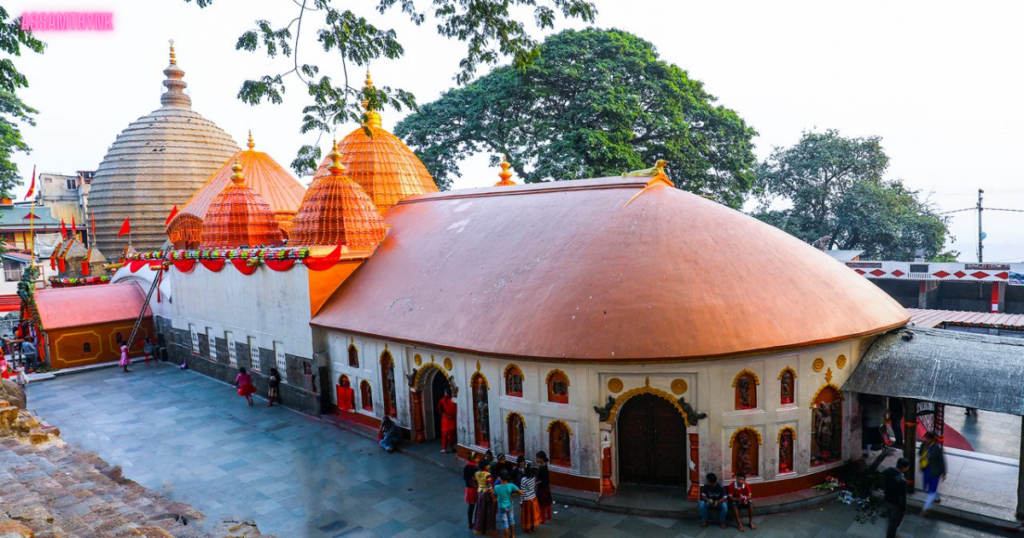 Located just a short distance from Umananda Temple, the Kamakhya Temple is one of the most revered Shakti Peethas in India. Perched atop the Nilachal Hill in Guwahati, it is dedicated to Goddess Kamakhya, the embodiment of feminine energy and power.The temple’s unique architecture, featuring a beehive-shaped dome, attracts spiritual seekers and history enthusiasts alike. The annual Ambubachi Mela, celebrating the goddess’s fertility, is a grand event drawing thousands of devotees.A visit to Kamakhya Temple complements the spiritual experience of Umananda Temple, offering a deeper connection to Assam’s rich religious heritage.
Located just a short distance from Umananda Temple, the Kamakhya Temple is one of the most revered Shakti Peethas in India. Perched atop the Nilachal Hill in Guwahati, it is dedicated to Goddess Kamakhya, the embodiment of feminine energy and power.The temple’s unique architecture, featuring a beehive-shaped dome, attracts spiritual seekers and history enthusiasts alike. The annual Ambubachi Mela, celebrating the goddess’s fertility, is a grand event drawing thousands of devotees.A visit to Kamakhya Temple complements the spiritual experience of Umananda Temple, offering a deeper connection to Assam’s rich religious heritage. - Srimanta Sankardev Kalakshetra:
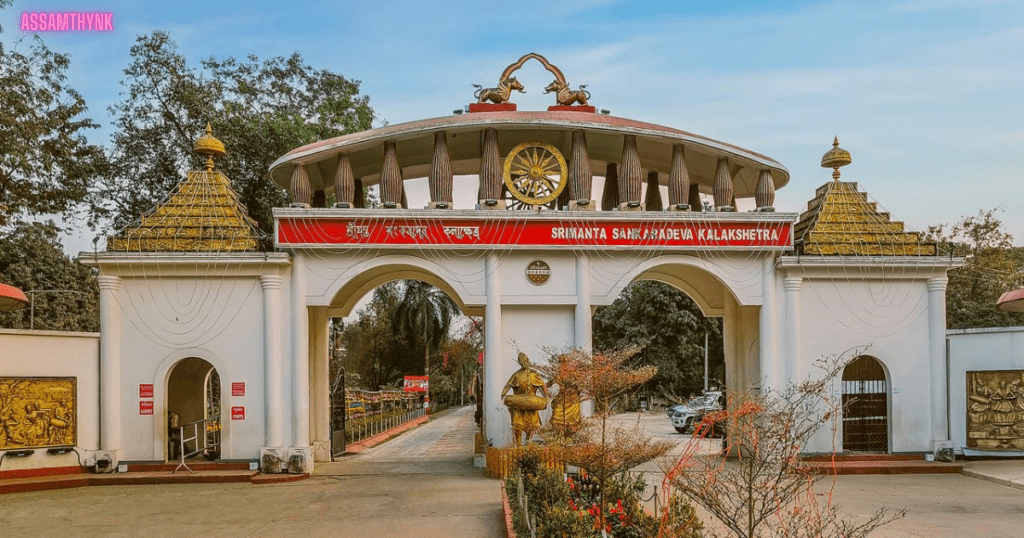 Located a short drive from Umananda Temple, Srimanta Sankardev Kalakshetra is a cultural complex dedicated to Assam’s art, culture, and heritage. Named after the revered saint and cultural icon Srimanta Sankardev, the site features a museum, open-air theatre, and exhibition halls showcasing traditional Assamese art, crafts, and artifacts.The sprawling complex also has a library and a heritage park, making it an excellent destination for those interested in delving deeper into Assam’s rich history and traditions. Its serene ambiance and informative exhibits make it a perfect addition to your visit to Umananda Temple.
Located a short drive from Umananda Temple, Srimanta Sankardev Kalakshetra is a cultural complex dedicated to Assam’s art, culture, and heritage. Named after the revered saint and cultural icon Srimanta Sankardev, the site features a museum, open-air theatre, and exhibition halls showcasing traditional Assamese art, crafts, and artifacts.The sprawling complex also has a library and a heritage park, making it an excellent destination for those interested in delving deeper into Assam’s rich history and traditions. Its serene ambiance and informative exhibits make it a perfect addition to your visit to Umananda Temple. - Assam State Zoo and Botanical Garden:
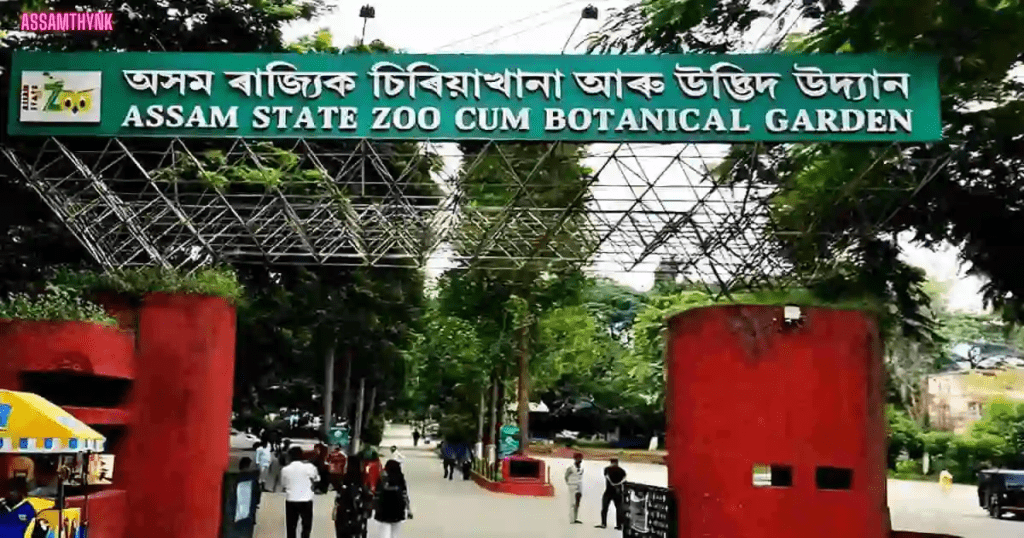 The Assam State Zoo and Botanical Garden, located in Guwahati, is a prominent attraction near the Umananda Temple. Spanning over 432 acres, it is one of the largest zoos in India and a haven for wildlife enthusiasts. The zoo is home to various species of animals, including the endangered one-horned rhinoceros, tigers, and many birds. Alongside the zoo, the botanical garden features a vast collection of plants and trees, showcasing the rich flora of Assam. The serene environment and lush greenery make it an ideal spot for nature lovers and a great complement to the nearby Umananda Temple.
The Assam State Zoo and Botanical Garden, located in Guwahati, is a prominent attraction near the Umananda Temple. Spanning over 432 acres, it is one of the largest zoos in India and a haven for wildlife enthusiasts. The zoo is home to various species of animals, including the endangered one-horned rhinoceros, tigers, and many birds. Alongside the zoo, the botanical garden features a vast collection of plants and trees, showcasing the rich flora of Assam. The serene environment and lush greenery make it an ideal spot for nature lovers and a great complement to the nearby Umananda Temple. - Brahmaputra River Cruise:
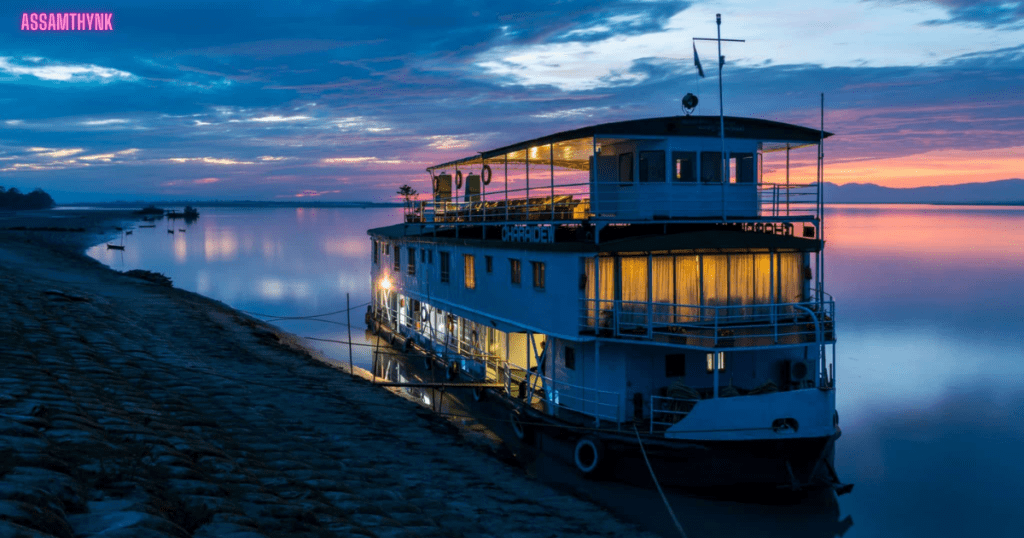 The Umananda Temple, located on Peacock Island in the Brahmaputra River, is a significant religious site in Guwahati, Assam. Dedicated to Lord Shiva, it offers panoramic views of the river and the city. To reach the temple, visitors can enjoy a serene Brahmaputra River Cruise, which provides a scenic and peaceful journey along the river. The cruise allows tourists to enjoy the lush greenery, local wildlife, and picturesque landscapes while approaching the island. The Umananda Temple, known for its historic architecture, is an ideal destination for both spiritual and nature lovers, combining culture, history, and natural beauty.
The Umananda Temple, located on Peacock Island in the Brahmaputra River, is a significant religious site in Guwahati, Assam. Dedicated to Lord Shiva, it offers panoramic views of the river and the city. To reach the temple, visitors can enjoy a serene Brahmaputra River Cruise, which provides a scenic and peaceful journey along the river. The cruise allows tourists to enjoy the lush greenery, local wildlife, and picturesque landscapes while approaching the island. The Umananda Temple, known for its historic architecture, is an ideal destination for both spiritual and nature lovers, combining culture, history, and natural beauty. - Deepor Beel:
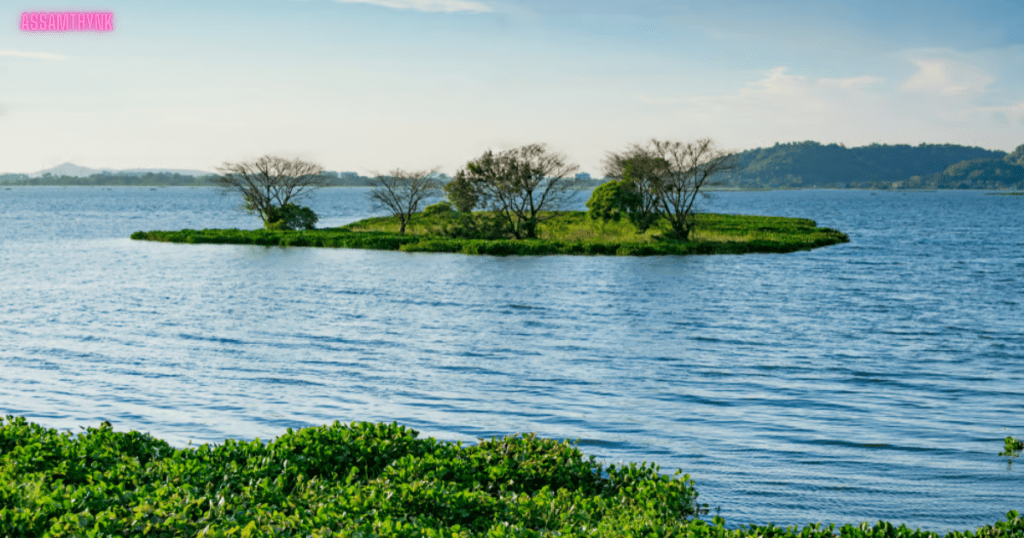 Located near Guwahati, Deepor Beel is a scenic wetland and an important wildlife sanctuary. A short drive from the Umananda Temple, it offers a serene escape surrounded by nature. The beel (lake) is home to diverse bird species, making it a haven for birdwatchers. It is also a critical habitat for aquatic life and migratory birds, especially during winter. Visitors can enjoy boat rides on the lake, which provide views of the lush greenery and distant hills. The peaceful environment and proximity to Umananda Temple make Deepor Beel an ideal spot for nature lovers and those seeking tranquility.
Located near Guwahati, Deepor Beel is a scenic wetland and an important wildlife sanctuary. A short drive from the Umananda Temple, it offers a serene escape surrounded by nature. The beel (lake) is home to diverse bird species, making it a haven for birdwatchers. It is also a critical habitat for aquatic life and migratory birds, especially during winter. Visitors can enjoy boat rides on the lake, which provide views of the lush greenery and distant hills. The peaceful environment and proximity to Umananda Temple make Deepor Beel an ideal spot for nature lovers and those seeking tranquility.
Conservation Efforts and Challenges
Efforts by the Archaeological Survey of India and local authorities aim to preserve the temple and its surroundings. However, challenges like pollution in the Brahmaputra River and increasing footfall require sustainable solutions to maintain the site’s sanctity.
FAQ
1. On which hill is the Umananda Temple located?
A: The Umananda Temple is located on Peacock Island, a small hillock in the Brahmaputra River near Guwahati, Assam.
2. What is the history of Umananda?
A: Umananda Temple, built by King Gadadhar Singh in 1694, is dedicated to Lord Shiva, blending Assamese and Mughal architecture.
3. What is special in Guwahati?
A: Guwahati offers Kamakhya Temple, Umananda Temple, Brahmaputra River cruises, vibrant markets, Assam State Zoo, and rich cultural heritage.
4. Which silk is famous in Assam?
A: Assam is famous for Muga silk, known for its natural golden hue, durability, and unique heritage in traditional weaving.
5. What is so special about Kamakhya Temple?
A: Kamakhya Temple, a major Shakti Peetha, is renowned for tantric practices, unique Ambubachi Mela, and its spiritual significance in Assam.
6. Can we visit Kamakhya Temple during periods?
A: Yes, Kamakhya Temple celebrates menstruation as a divine power, notably during the Ambubachi Mela, emphasizing fertility and Shakti worship.
7. Which beel is famous in Assam?
A: Deepor Beel, a prominent wetland near Guwahati, is famous in Assam for its rich biodiversity and migratory bird sanctuary.
8. Is Guwahati a capital of any state?
A: No, Guwahati is not a state capital. Dispur, a locality within Guwahati, serves as Assam’s official capital.
9. Which is the best time to visit Guwahati?
A: The best time to visit Guwahati is October to March, offering pleasant weather for exploring temples, wildlife, and cultural events.
10. When to visit Kamakhya Temple?
A: The ideal time to visit Kamakhya Temple is October to March, or during the Ambubachi Mela in June for spiritual festivities.
Conclusion
The Umananda Temple is more than just a spiritual haven; it’s a symbol of Assam’s cultural and historical wealth. Whether you’re seeking divine blessings, exploring architectural marvels, or simply enjoying a serene retreat, Umananda Temple offers an unforgettable experience. Plan your visit to this sacred jewel and immerse yourself in its timeless charm.
Join Our Telegram Channel

